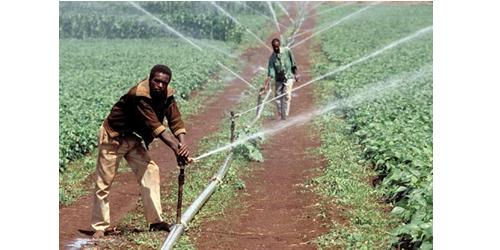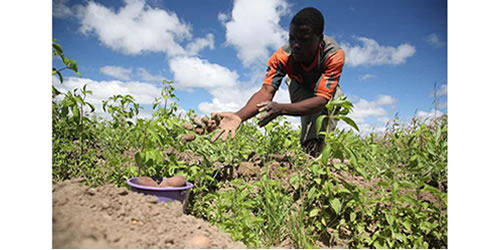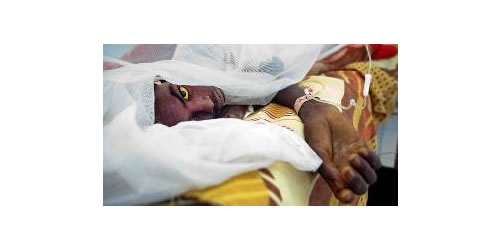Myth-busting for African agriculture

If you know anything about African agriculture, many commonly held beliefs about the sector will easily spring to mind. Most farmers are women. Uptake of fertilizer and improved seed is low. Post harvest losses are huge.
Yet according to a new project “Agriculture in Africa – Telling Facts from Myths,” the evidence upon which we base our decisions and views about agriculture and farming systems in sub-Saharan Africa is often inadequate or out of date.
The project seeks to tell facts from myths about African agriculture using the Living Standards Measurement Study – Integrated Surveys on Agriculture, or LSMS-ISA, a household survey project working to collect up to date agricultural data.
It tests the validity of 15 commonly believed statements; statements that, although commonly accepted, may no longer be valid given Africa’s rapid economic growth and the new era of high food prices, amongst other driving forces of change. To date, surveys have been conducted in six countries — Ethiopia, Malawi, Niger, Nigeria, Tanzania and Uganda — representing 40 percent of the population in sub-Saharan Africa.
We took a look at the preliminary findings to see where many of us may have been going wrong…or right. Here are some new facts about African agriculture that you may not know.
FACT #1: Inorganic fertilizer in Africa is being used on staple crops, not only export crops.
Fertilizer use is claimed to be dismally low in sub-Saharan Africa, and poor soil health is a serious challenge across the continent. However, the six countries examined are making progress to increasing fertilizer use, and not only on so-called “cash crops.”
In fact, according to the preliminary findings of this project, inorganic fertilizer use is as high on maize dominated plots destined for export as on farm plots used for sustenance. For example, Malawi uses 135 kilogram per hectare on maize farms compared to the 146 kg/ha household average and Nigeria uses 123 kg/ha compared to 128 kg/ha, respectively.
The issue of soil health in Africa has been under much scrutiny in recent weeks, with the launch of the International Year of Soil, as declared by the Food and Agriculture Organization and the publication of the Montpellier Panel’s report “No Ordinary Matter: Conserving, Restoring and Enhancing Africa’s Soils.” If we are to make interventions for improved but targeted use of fertilizer in Africa, it is essential to have more up-to-date information on which to base our recommendations.
FACT #2: Uptake of improved seed varieties is already high, but mechanisation and irrigation is low.
According to the project findings, Ethiopia is showing the lowest uptake of improved seed, with 26 percent, and Malawi is showing the most progress with 56 percent uptake in the households surveyed. Given the difficulties in fully capturing data for improved seed use, these are likely underestimates.
However, a limited use of mechanization and irrigation was found to still be true, with an average of 5 percent of the households surveyed for the LSMS-ISA showing some sign of irrigation, with only 2 percent of the cultivated land under irrigation by smallholders.
The findings show that there is still a need to invest in the distribution and adoption of improved seeds, alongside improvements in irrigation in machinery.
Whilst under certain circumstances, irrigation can help to raise yields by 50 percent, investing in farm machinery has benefits both on and off the farm. Farm machinery can boost yields, reduce the time it takes to harvest crops, add value to farm products with the development of manufacturing capacity and generate employment opportunities for machine operators, repairs and servicing. Strengthening entrepreneurship in African agriculture should still be a high priority.
FACT #3: Men take on more farming responsibilities than previously thought.
We often hear that women are responsible for 60-80 percent of the agricultural labor supplied on the continent of Africa. This initially seems shocking until you consider the data was sourced in the 1970s.
In fact, results from the household surveys found that women make up between 24 percent of the labor force in Niger and up to 56 percent in Uganda, or 40 percent on average across the six countries — considerably less than the previous estimate.
The results show more male involvement in non-edible crops, except in southern Nigeria, where female involvement reaches 61 percent. The study also found that women are relatively more involved in harvesting and less so in land preparation in the countries in which men have the higher share of agricultural labour.
Read more news on food and agriculture:
● Accounting for land rights in the post-2015 sustainable development agenda
● Food security hinges on agriculture partnerships
● How companies and NGOs can work together to tackle food security
Findings showed that on average, the production gap between male and female managed plots is 25 percent. Furthermore, closing the gender gap in agriculture would only raise agricultural productivity by 6.3 percent (at most 25 percent of plots are managed by women).
Using this information to help inform public policy debates and funding allocations, let’s consider the need to double yields by 2050 to meet the demand of growing populations. If total agricultural supply is the only objective, then this research suggests that closing the gender gap alone won’t get us there.
However, if the objective is food and social security, gender equality, land rights and improved child nutrition, to name a few, then focussing on women has been repeatedly found to be vital and there is therefore a serious and ongoing need to engage and work with female farmers, focussing strongly on female empowerment.
Do new truths lead to new myths?
Without current and accurate data, we — the research and policy community — run the risk of throwing limited financial and human resources at interventions that are either no longer relevant or possibly designed to fail.
There is also the risk, however, that new “truths” could lead to new “myths.” Keeping in mind that the findings so far only cover six countries, the playbook should not be entirely rewritten, yet. Maybe it should be revised for the six countries already examined.
However, to avoid running the risk of creating new myths, first and foremost, we should stop generalizing about Africa. It is a continent, not a country, and it requires a differentiated narrative. With 56 countries and a multitude of cultures, attitudes, religions and languages, agricultural development planning in Africa needs to embrace, not shy away from, these differences.
Growing interest from governments, the private sector and donors over the last decade mean that billions of dollars are again being invested in African agriculture. The LSMS-ISA offers new, robust data that are open access and can establish baselines using a bottom-up approach. Generating more reliable evidence will enable policy-makers to make better decisions going forward.
Truth be told, hopefully we are now at the beginning of building a new story, a more complex and differentiated one than we have now.
Source: international development news online





